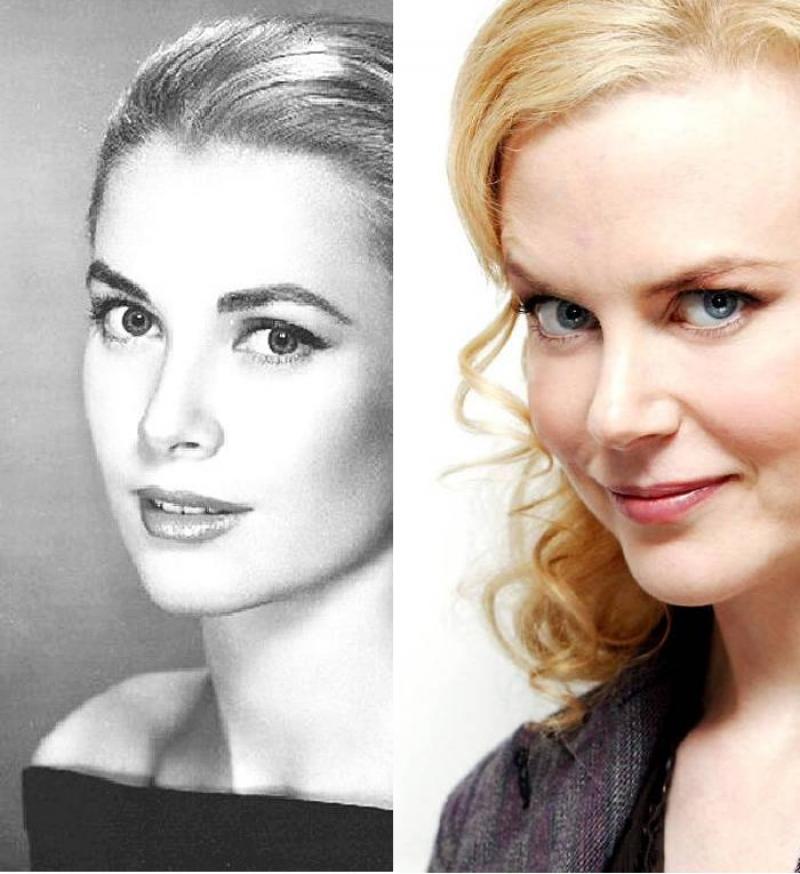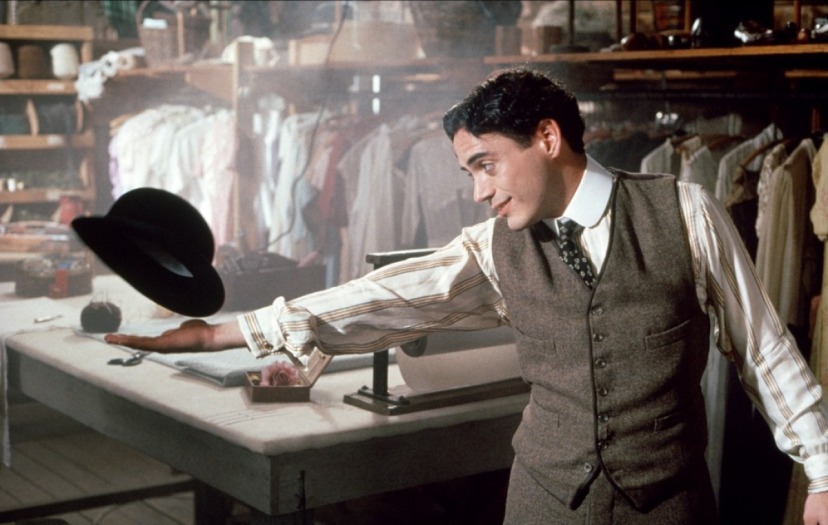Opinion: Why film stars should never play film stars | reviews, news & interviews
Opinion: Why film stars should never play film stars
Opinion: Why film stars should never play film stars
Nicole Kidman to play Grace Kelly? No thank you

News that Nicole Kidman is to play Grace Kelly in a movie called Grace of Monaco convinces me that it is foredoomed. This time Kidman won’t have any prosthetics to help her resemble Grace Kelly, such as the long nose she wore as Virginia Woolf in The Hours (2002). Nor would it be possible, as attractive and talented as Kidman is, to replicate Kelly’s ineffable quality and patrician beauty.
Unlike other biopics, those with film stars playing film stars fail because the originals exist to be compared with and appreciated in the same medium. In fact, they are attempting to simulate someone whose profession is simulation. Sociologist Edgar Morin defined a star as the “combination of screen role and actor, of filmic persona and off-screen personality, and from their union is born a composite creature who participates in both, envelops them both. The public does not know the star as a person but the star as an image.” No biopic can impart this complex image containing multiple meanings. When Woody Allen conjures up the ghost of Humphrey Bogart to advise him on how to get a “dame” to fancy him in Play It Again, Sam (1972), it is the reductive view of Bogie, in a trench coat, a hat pulled down over his eyes, a cigarette in his mouth and a gat in his pocket.
 No matter how good Michele Williams was as Marilyn Monroe in My Week With Marilyn (2011), her performance could never be much more than an impersonation. As Karina Longworth wrote in The Village Voice, “You never forget that you’re watching a talented living actress labouring to mimic a long-gone movie star who, on-screen, at least, never seemed to be acting at all.” It must be remembered that both Grace Kelly and Marilyn Monroe found it difficult enough to play themselves in real life.
No matter how good Michele Williams was as Marilyn Monroe in My Week With Marilyn (2011), her performance could never be much more than an impersonation. As Karina Longworth wrote in The Village Voice, “You never forget that you’re watching a talented living actress labouring to mimic a long-gone movie star who, on-screen, at least, never seemed to be acting at all.” It must be remembered that both Grace Kelly and Marilyn Monroe found it difficult enough to play themselves in real life.
Among the few successful biopics of a star was The Jolson Story (1946), mainly because when Columbia Pictures decided to make it, Al Jolson hadn’t been seen for years in films and was all washed up. Wisely, the studio got Jolson to dub the songs for the unknown Larry Parks. There is a curious Pirandellian moment in the sequel, Jolson Sings Again (1949), when Jolson, played by Parks, meets Larry Parks who is going to play him in the film.

One solution seemed to be, as in the case of Larry Parks, to cast complete unknowns as celebrated stars, though no reflected fame came to Anthony Dexter as Valentino (1951) or Keefe Brasselle in The Eddie Cantor Story (1953). There is a scene in L.A. Confidential (1997) that exposes the weakness of these mimetic roles. Two cops come into a bar to question a man sitting with a blonde, whom he claims to be Lana Turner. One cop (Guy Pearce) says, “A hooker made to look like Lana Turner is still a hooker. She just looks like Lana Turner.” “It is Lana Turner,” says the other cop (Kevin Spacey) with authority. Actually, the actress (Brenda Bakke) only resembles the star vaguely, so the whole point of the scene is lost.
 Towards the end of Richard Attenborough’s vacuous Chaplin (1992), we see a clip of the real Charlie Chaplin, a fatal moment that blows Robert Downey Jr’s studied interpretation out of the water. None of this has stopped filmmakers continuing to think that today’s actors can recapture the charisma of the stars of Hollywood’s golden age.
Towards the end of Richard Attenborough’s vacuous Chaplin (1992), we see a clip of the real Charlie Chaplin, a fatal moment that blows Robert Downey Jr’s studied interpretation out of the water. None of this has stopped filmmakers continuing to think that today’s actors can recapture the charisma of the stars of Hollywood’s golden age.
In a sketch in the BBC TV comedy series Not Only But Also in the 1960s, Peter Cook was seen in drag as Greta Garbo in the famous last shot of Queen Christina (1933), in which she stands like a masthead at the bow of the ship. The expressionless Cook was perfect casting in the scene for which the director had told Garbo, “I want your face to be a blank sheet of paper... so that you're nothing but a beautiful mask.” Cook confessed, “As Garbo I thought I looked incredibly beautiful. I fancied myself rotten! I thought I looked rather better than she did!” Pity Peter Cook is not still around to play Grace Kelly.
Add comment
The future of Arts Journalism
You can stop theartsdesk.com closing!
We urgently need financing to survive. Our fundraising drive has thus far raised £49,000 but we need to reach £100,000 or we will be forced to close. Please contribute here: https://gofund.me/c3f6033d
And if you can forward this information to anyone who might assist, we’d be grateful.

Subscribe to theartsdesk.com
Thank you for continuing to read our work on theartsdesk.com. For unlimited access to every article in its entirety, including our archive of more than 15,000 pieces, we're asking for £5 per month or £40 per year. We feel it's a very good deal, and hope you do too.
To take a subscription now simply click here.
And if you're looking for that extra gift for a friend or family member, why not treat them to a theartsdesk.com gift subscription?
more Film
 Bugonia review - Yorgos Lanthimos on aliens, bees and conspiracy theories
Emma Stone and Jesse Plemons excel in a marvellously deranged black comedy
Bugonia review - Yorgos Lanthimos on aliens, bees and conspiracy theories
Emma Stone and Jesse Plemons excel in a marvellously deranged black comedy
 theartsdesk Q&A: director Kelly Reichardt on 'The Mastermind' and reliving the 1970s
The independent filmmaker discusses her intimate heist movie
theartsdesk Q&A: director Kelly Reichardt on 'The Mastermind' and reliving the 1970s
The independent filmmaker discusses her intimate heist movie
 Blu-ray: Wendy and Lucy
Down-and-out in rural Oregon: Kelly Reichardt's third feature packs a huge punch
Blu-ray: Wendy and Lucy
Down-and-out in rural Oregon: Kelly Reichardt's third feature packs a huge punch
 The Mastermind review - another slim but nourishing slice of Americana from Kelly Reichardt
Josh O'Connor is perfect casting as a cocky middle-class American adrift in the 1970s
The Mastermind review - another slim but nourishing slice of Americana from Kelly Reichardt
Josh O'Connor is perfect casting as a cocky middle-class American adrift in the 1970s
 Springsteen: Deliver Me From Nowhere review - the story of the Boss who isn't boss of his own head
A brooding trip on the Bruce Springsteen highway of hard knocks
Springsteen: Deliver Me From Nowhere review - the story of the Boss who isn't boss of his own head
A brooding trip on the Bruce Springsteen highway of hard knocks
 The Perfect Neighbor, Netflix review - Florida found-footage documentary is a harrowing watch
Sundance winner chronicles a death that should have been prevented
The Perfect Neighbor, Netflix review - Florida found-footage documentary is a harrowing watch
Sundance winner chronicles a death that should have been prevented
 Blu-ray: Le Quai des Brumes
Love twinkles in the gloom of Marcel Carné’s fogbound French poetic realist classic
Blu-ray: Le Quai des Brumes
Love twinkles in the gloom of Marcel Carné’s fogbound French poetic realist classic
 Frankenstein review - the Prometheus of the charnel house
Guillermo del Toro is fitfully inspired, but often lost in long-held ambitions
Frankenstein review - the Prometheus of the charnel house
Guillermo del Toro is fitfully inspired, but often lost in long-held ambitions
 London Film Festival 2025 - a Korean masterclass in black comedy and a Camus classic effectively realised
New films from Park Chan-wook, Gianfranco Rosi, François Ozon, Ildikó Enyedi and more
London Film Festival 2025 - a Korean masterclass in black comedy and a Camus classic effectively realised
New films from Park Chan-wook, Gianfranco Rosi, François Ozon, Ildikó Enyedi and more
 After the Hunt review - muddled #MeToo provocation
Julia Roberts excels despite misfiring drama
After the Hunt review - muddled #MeToo provocation
Julia Roberts excels despite misfiring drama
 London Film Festival 2025 - Bradley Cooper channels John Bishop, the Boss goes to Nebraska, and a French pandemic
... not to mention Kristen Stewart's directing debut and a punchy prison drama
London Film Festival 2025 - Bradley Cooper channels John Bishop, the Boss goes to Nebraska, and a French pandemic
... not to mention Kristen Stewart's directing debut and a punchy prison drama
 Ballad of a Small Player review - Colin Farrell's all in as a gambler down on his luck
Conclave director Edward Berger swaps the Vatican for Asia's sin city
Ballad of a Small Player review - Colin Farrell's all in as a gambler down on his luck
Conclave director Edward Berger swaps the Vatican for Asia's sin city

Comments
I agree as beautiful as
1. I was reminded of Grace